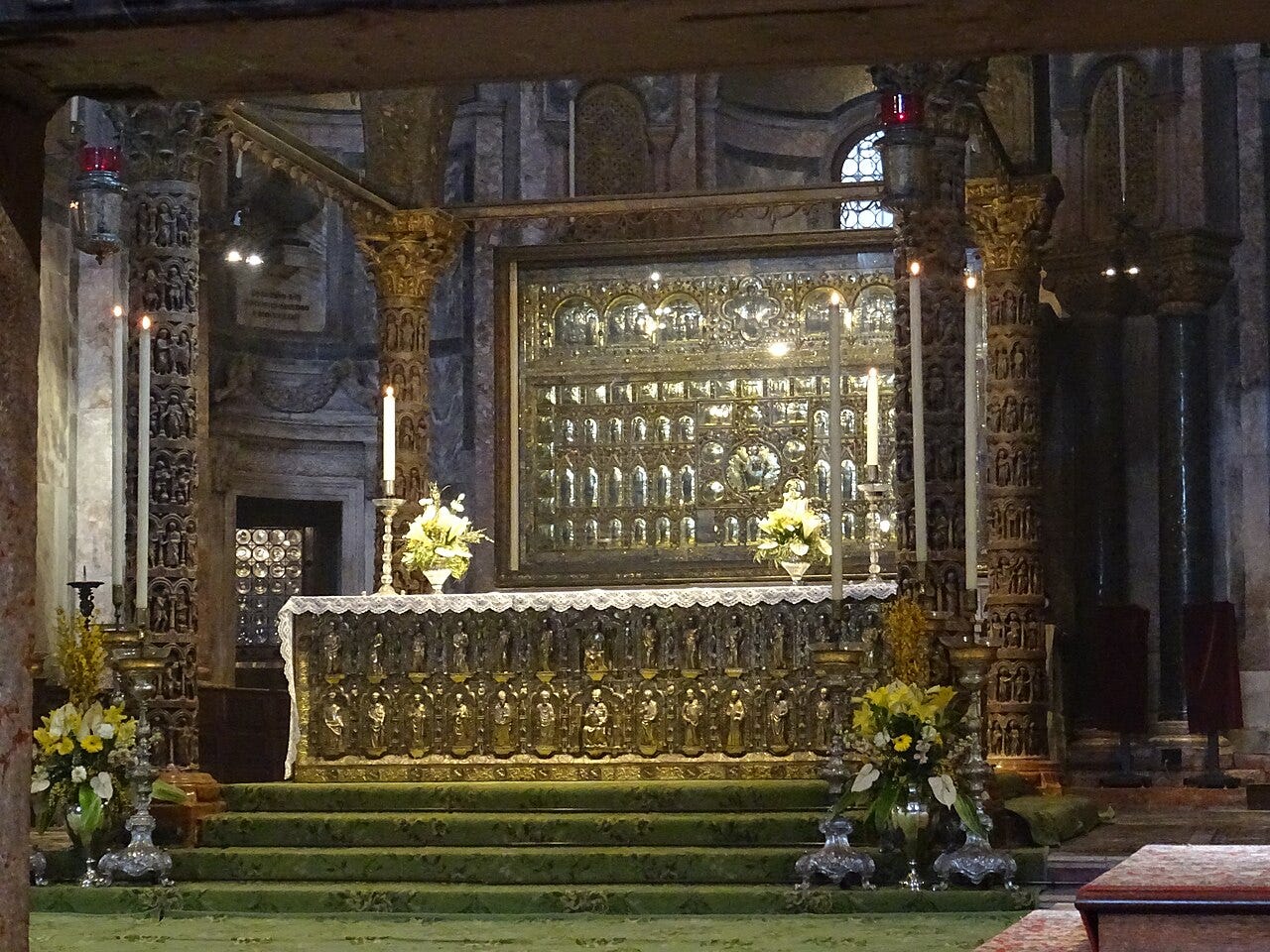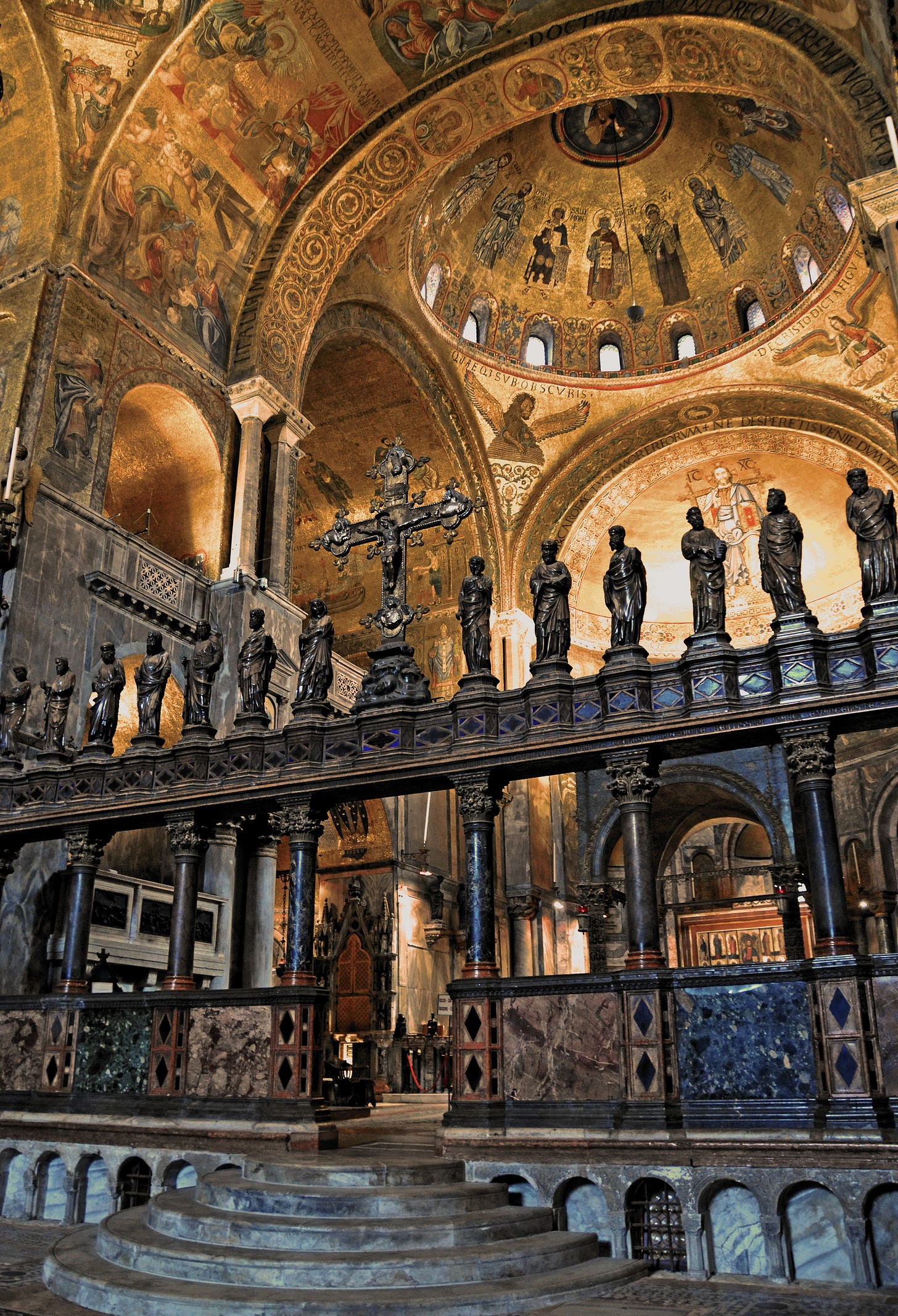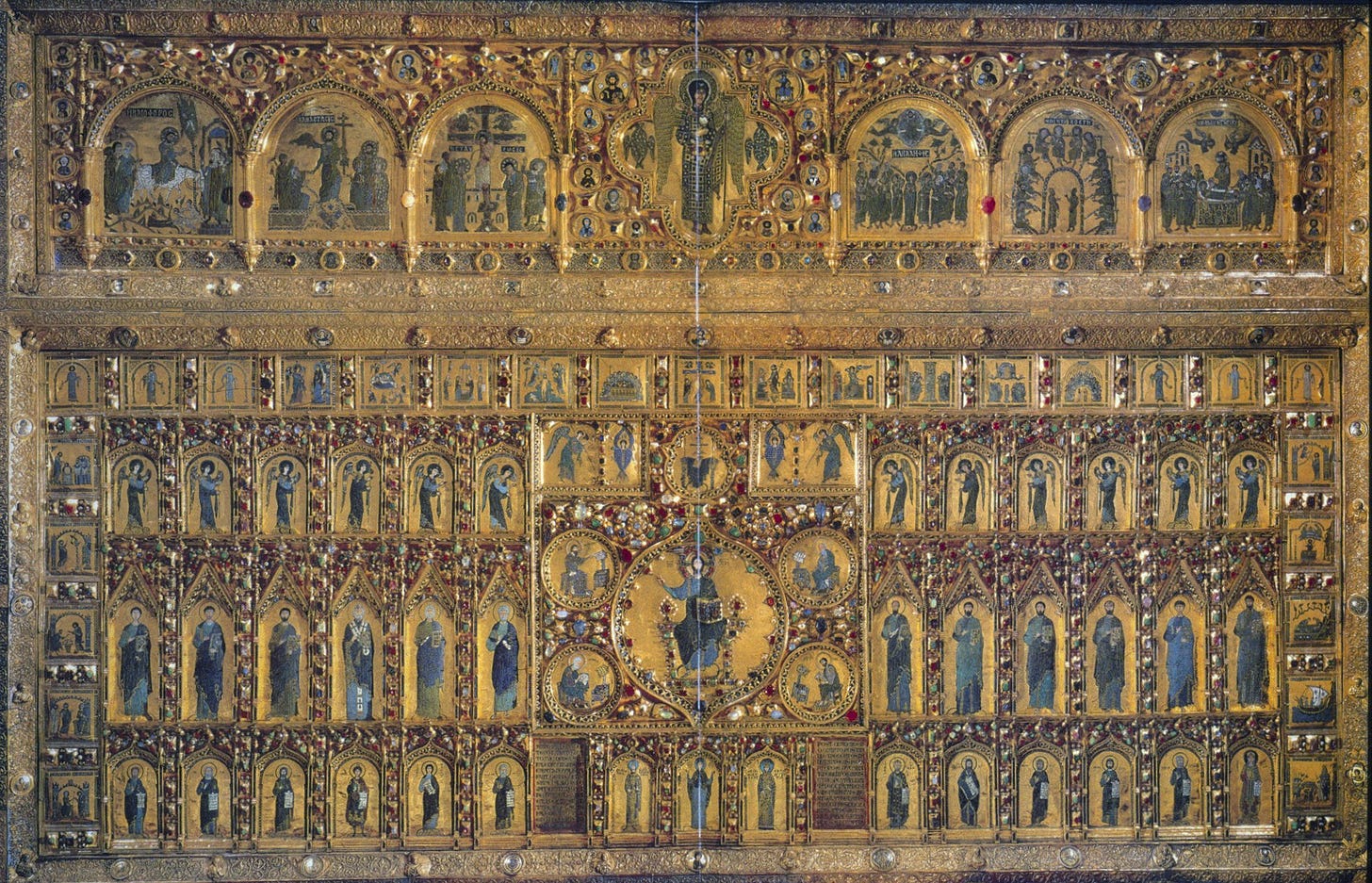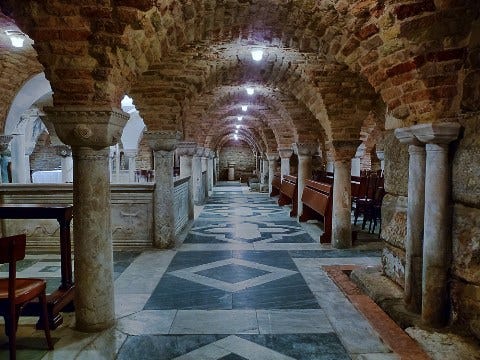Hello, Dear Reader
Today we're in Venice’s Piazza San Marco, the heart of the city, with St. Mark’s Basilica gleaming above us like a jeweled crown.
Known as the Chiesa d’Oro (Church of Gold), it’s a Byzantine marvel you’ve likely heard of, or perhaps even visited, but may not be familiar with its full story. So, in today’s edition of the Cultural Canvas newsletter we’ll dive into its history, highlight its stunning features, and share a few secrets that make it even more fascinating.
Brief History
The story of San Marco begins in 828 AD, when Venetian merchants pulled off one of history’s boldest heists: they smuggled the relics of St. Mark the Evangelist out of Alexandria, allegedly hiding them under pork to evade Muslim guards—a detail immortalized in a 13th-century mosaic above the basilica’s leftmost portal.
The relics needed a worthy home, so Doge Giustiniano Participazio commissioned a chapel, completed in 832.
That modest structure was torched during a rebellion in 976, and after a swift rebuild, the basilica’s real transformation began in 1063 under Doge Domenico Contarini.
The version we see today, consecrated in 1094, was designed to reflect Venice’s burgeoning maritime power, modeled after Constantinople’s long-lost Church of the Holy Apostles. Until 1807, it served as the Doge’s private chapel before officially becoming Venice’s cathedral.
The Exterior
San Marco’s facade is a visual symphony. Byzantine, Romanesque, and Gothic elements converge in five arched portals framed by over 500 columns—many looted from Constantinople during the Fourth Crusade in 1204. These columns, with their 3rd-century capitals and Egyptian porphyry, were once ballast for Venetian ships, blending practicality with swagger.
The facade’s lower register boasts intricate marble carvings, while the upper level dazzles with mosaics, including the 13th-century Sant’Alipio mosaic that depicts the relic theft. Above the central window, the winged lion of St. Mark stands proud, flanked by the famous bronze horses, pilfered from Constantinople’s Hippodrome. These horses, possibly Roman or Greek from the 2nd or 3rd century, narrowly escaped being melted down and were installed in 1254 (the originals now reside in the basilica’s museum). The five domes, with lead-clad wooden frames for extra height, echo Eastern influences like Jerusalem’s Al-Aqsa Mosque, making the basilica a beacon of Venice’s global reach.
The Interior: A Golden Jewel Box
Over 8,000 square meters of mosaics—roughly the size of two football fields—cover the walls, arches, and domes, shimmering with gold-leaf tesserae encased in glass. These mosaics, crafted from the 12th century onward, tell stories from the Bible, the lives of Christ, the Virgin Mary, and St. Mark, with Latin inscriptions adding a sense of medieval gravitas.
The basilica’s Greek cross layout, with five domes creates a spacious, otherworldly feel. Its 12th-century marble floor weaves geometric patterns with animal motifs, though today it’s often protected by carpets due to wear from millions of visitors.
The high altar’s centerpiece is the Pala d’Oro, a golden panel studded with gems, crafted by Byzantine goldsmiths in the 10th century and expanded later. It’s a jaw-dropping display of wealth, shielded by glass to preserve its luster. Beneath the altar lies St. Mark’s tomb in the crypt, a remnant of the original 9th-century church, scarred by centuries of flooding.

The treasury, enriched after 1204 with spoils from Constantinople, holds over 280 pieces—chalices, reliquaries, even a beaker said to contain Christ’s blood.
The upstairs museum offers a closer look at the bronze horses, vestments, and mosaic fragments, plus a terrace with sweeping views of Piazza San Marco and the lagoon.
Cultural Canvas is a reader-supported publication. Every like, comment, share, and donation helps us grow—your support truly matters!
Amazing Features
The Mosaics: Spanning 85,000 square feet, this is one of the world’s largest continuous mosaic works. The 12th-century Dome of Pentecost shows stunning Byzantine artistry, where rough Venetian lines mingle with Constantinople’s refined naturalism.
The Bronze Horses: These ancient quadriga statues, possibly from Nero’s Rome, were gilded to reduce glare and crafted mostly of copper. Restored in the 1960s, their heads were misassembled—but their aura endures.
Pala d’Oro: A glowing altar screen of enamels and jewels that radiates Venetian opulence, signaling both piety and political prowess.
The Tetrarchs: A porphyry sculpture of four Roman emperors looted from Constantinople, standing by the south portal. Its crimson stone once symbolized imperial authority, repurposed to elevate Venice’s stature.
The Crypt: Hidden beneath the presbytery, this remnant of the original church holds St. Mark’s tomb.
The Building Process
Building San Marco was never easy. The first chapel, built in 832, likely had a cross-shaped layout and a wooden dome. After the fire in 976, the city rebuilt quickly, leading to the major construction project in 1063 under Doge Domenico Contarini. A Greek architect helped shape its Romanesque-Byzantine style, using local stones like Aurisina and Verona, along with reused Roman materials.
The basilica was officially completed in 1094, when Doge Vitale Falier consecrated it.
But additions continued for centuries: marble panels in the 1200s, Gothic arches, and raised lead-covered domes to match the nearby Doge’s Palace. The entryway and front mosaics were added in the 13th century, followed by the baptistery in the 14th and Zen Chapel in the 16th.
Lesser-Known Gems
The Rifle Offering: In the left transept, a Romanesque relief of the Madonna and Child includes a votive rifle—an enigmatic nod to modernity amid medieval symbolism.
Miraculous Rediscovery: After the 976 fire, St. Mark’s relics were believed lost until they “miraculously” resurfaced in 1094, a moment commemorated as Inventio Sancti Marci.
Alexander the Great Rumor: A British scholar once speculated that St. Mark’s tomb might hold Alexander the Great’s remains. Though unproven, the theory stirred much intrigue.
Sustainable Spoils: Venetians recycled like masters—Eastern columns, marbles, and capitals were reimagined to create a harmonious blend of classical and medieval styles.
Flooding Woes: At just 80 cm above sea level, the basilica’s narthex often transforms into a shallow pool during high tides, its floors deteriorating from rising damp and constant footfall.

San Marco is Venice’s soul. It hosted Doge elections, state ceremonies, and religious rites, embodying the Republic’s unique fusion of devotion and diplomacy.
San Marco Basilica it’s a place that feels like stepping through time.
Thank you for being part of Cultural Canvas! If you love what we do, consider supporting us to keep it free for everyone. Stay inspired and see you in the next post!









